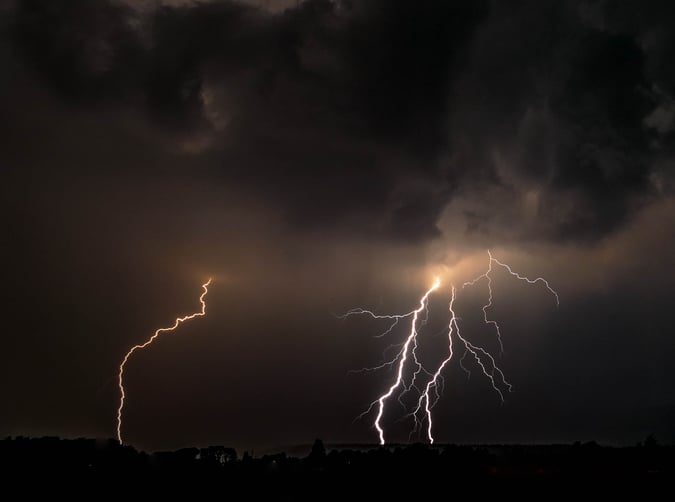In the northeastern United States, Halloween 2019 was spooky for all the wrong reasons as major rain and windstorms caused severe flooding and knocked out power for hundreds of thousands of residents.

While this storm did its worst on the East Coast, the West Coast battled (and is still battling) deadly wildfires and natural disasters that have wiped out areas of California that were already vulnerable and damaged from fires in 2017 and 2018. In addition to severe property damage, these fires have also caused grid failure and power outages for millions of California residents. Some of the outages have been preventative, but many have been a serious and sometimes life-threatening effect of the wildfires.
In both cases, communities and utilities are looking for potential solutions—and someone to provide those solutions—for backup power and resiliency during weather events that have grown increasingly more powerful over the past several years.
During the Halloween storm, for example, 1,100 homes were able to keep the lights on in Vermont thanks to a home battery pilot program by Green Mountain Power, a utility providing service to much of the state. In New Jersey, Sunrun offers the BrightBox Home Battery as a preemptive solution to blackouts and storm-related outages. And just last week, community-choice aggregators in Northern California released an RFP for a 30-megawatt behind-the-meter battery program that would equip up to 6,000 homes and businesses in vulnerable communities with batteries (in combination with solar) as a backup power source during the 2020 fire season.
Here’s the catch: while communities are clamoring for a solution, and many service providers are testing pilot battery programs, awareness among everyday consumers is still very low. Recently, KSV conducted research in the Northeast and found that, of the 500 homeowners surveyed, only one in four had heard of a home battery.
However, once the benefits of home batteries were explained, 71 percent of respondents cited that the most appealing benefit was having backup during a power outage.
Our research also uncovered a key opportunity: when it comes to bridging the gap between awareness of home batteries and familiarity with their benefits, homeowners look to their utility or energy service provider. Half of respondents in our research said they would trust their utility or electric provider to provide information about batteries, leading all other sources of information.
This continues a trend we have seen in our recent research where consumers consider the utility to be an authority on new or unfamiliar energy technologies, including electric vehicles, community solar, heat pumps, and smart thermostats.
In light of the consistently more severe weather occurrences across the country, we expect that 2020 will be a burgeoning year for home batteries, in terms of both awareness and adoption, as residents and businesses alike look for ways to increase their sense of safety and resilience.
Whether you are a product company, solutions provider or an energy company, there is a benefit in being ready and waiting to help. If you’re an energy service provider, consider building strategic partnerships with a product and solutions company. As a product and solutions company, look at ways in which you can work with local utilities and energy service providers to serve as a resource to both businesses and residents. As a complement to educational resources, companies may find it beneficial to partner with trade allies and develop a list of qualified installers that could boost homeowner confidence in battery installations.
We’ll be diving even further into our home battery research findings in the coming months, so stay tuned! In the meantime, let us know: do you anticipate that the growing severity of weather events will help increase residential demand for alternative energy sources?
